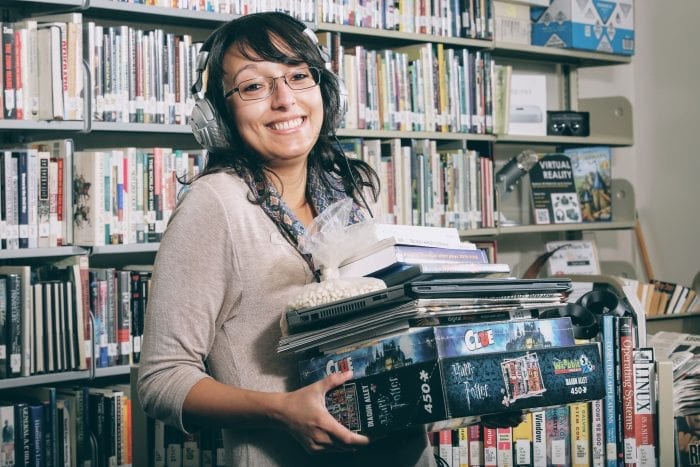Learn About a Lecturer: Janine Pino Immerses Students into Cataloging

Lecturer: Janine Pino
Location: Knoxville, Tennessee
Academic Background: MSIS, University of Tennessee, Knoxville
Current Career: I am a Catalog/Reference Librarian at Pellissippi State Community College. This will be my fifth year, and I’m currently up for tenure. The librarians all do a little bit of everything, but that really is everything you can imagine at an academic institution. In addition to cataloging, I do a lot of instruction and technology training, and right now I’m working on developing a game for first-year student orientation, so it’s really anything I want to explore that is creative and will increase library engagement.
How did you become a lecturer at SIS? Dr. Kelly came to visit Pellissippi state and it was the one day I wasn’t there because I was off teaching at another campus. She talked to some of my coworkers, and they told her that I was a cataloger who also spent time in the classroom. So she called me and asked me if I would be interested in teaching, and I said, “Oh yes!”
I am really excited about teaching, and I’ve been researching a lot about online education and instructional design. I am always trying to come up with out-of-the-box instruction sessions; I offer a lot of one-shot classes that you wouldn’t normally think of coming from a librarian. For example, I had a computer science teacher ask if we could teach copyright for source coding, and I jumped on the idea and have taught it ever since.
We also have a virtual reality collection at the library that I am in charge of. I take the HTC Vive or Oculus Rift to classrooms and show faculty how to use it to enhance their lesson plans in any subject area. I also visit computer science classes to introduce VR as a tool for immersive learning, therapy, and skill training, not just for gaming purposes.
What class do you teach at SIS? Cataloging & Classification, INSC 521 – it’s an introduction, so we go over the standards of bibliographic description, authority control, subject headings, and classification schemes. Students come in with little to no prior knowledge, but when they leave they should be able to do some actual cataloging. This will be my third time teaching the course.
Why should students take your class? If you’re interested in cataloging or metadata, you should take the class. I think anyone should take it to be a more well-rounded librarian and improve your understanding of the catalog. The field of cataloging has definitely evolved since I took the course in 2013 or 2014. The work is very different because we have all of these e-resources now, more vendor-supplied records, and growing interest in linked data. I never expected so many people to keep enrolling in the course, but we had so many this semester that we had to hire a second cataloging instructor.
For me, cataloging is like learning another language. It’s challenging, it’s like putting together a puzzle, and you never know what kind of object you’ll have to describe. I love to hear how libraries are cataloging umbrellas, board games, computer equipment, and various digital works.
How did you end up in libraries? I got my bachelor’s degree in English literature at UT, with a minor in Information Science. During my junior year, I worked at the Hodges library in the cataloging and processing department under Dianne Myers. She’s the one who told me that librarianship was a thing and I could make a career out of it.
I ended up getting a part-time job at the public library the summer before I started the master’s program. I later obtained an internship at the ORNL Research Library, and then I left both places for a full-time position at Information International Associates (IIA) while I was still in school. I was determined to try a little bit of everything, and to be aware of all the possibilities for employment with my MSIS degree. Surprisingly, I really liked working with people and even missed it when I was just cataloging every day. When I first thought I’d be a catalog librarian I wasn’t a people-person and I figured I’d be in a room full of stuff and I’d be coding on a computer. Then Pellissippi put me in a classroom and I ended up working on several committees. Then I was hired to teach for SIS. I’ve realized that I love working with students and being a mentor to them. I just get so excited about their excitement for the future.
What do you think of SIS’s current program?
The SIS program is incredibly diverse and is getting really technical. I love being a part of the program and I like to stay in touch with my students. I’m really proud of where they’ve ended up and that I have actually worked with some of them in a professional capacity.